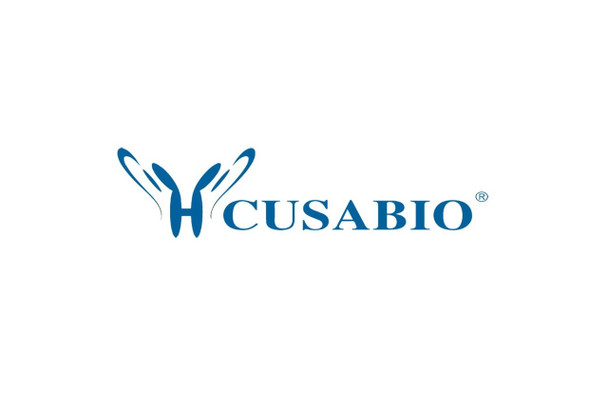Cusabio Human Recombinants
Recombinant Human Alpha-synuclein (SNCA) | CSB-YP021912HU
- SKU:
- CSB-YP021912HU
- Availability:
- 3 - 7 Working Days
Description
Recombinant Human Alpha-synuclein (SNCA) | CSB-YP021912HU | Cusabio
Alternative Name(s): Non-A beta component of AD amyloidNon-A4 component of amyloid precursor ;NACP
Gene Names: SNCA
Research Areas: Neuroscience
Organism: Homo sapiens (Human)
AA Sequence: MDVFMKGLSKAKEGVVAAAEKTKQGVAEAAGKTKEGVLYVGSKTKEGVVHGVATVAEKTKEQVTNVGGAVVTGVTAVAQKTVEGAGSIAAATGFVKKDQLGKNEEGAPQEGILEDMPVDPDNEAYEMPSEEGYQDYEPEA
Source: Yeast
Tag Info: N-terminal 6xHis-tagged
Expression Region: 1-140aa
Sequence Info: Full Length
MW: 16.5 kDa
Purity: Greater than 90% as determined by SDS-PAGE.
Relevance: May be involved in the regulation of dopamine release and transport. Induces fibrillization of microtubule-associated protein tau. Reduces neuronal responsiveness to various apoptotic stimuli, leading to a decreased caspase-3 activation.
Reference: Molecular cloning of cDNA encoding an unrecognized component of amyloid in Alzheimer disease.Ueda K., Fukushima H., Masliah E., Xia Y., Iwai A., Yoshimoto M., Otero D.A., Kondo J., Ihara Y., Saitoh T.Proc. Natl. Acad. Sci. U.S.A. 90:11282-11286(1993)
Storage: The shelf life is related to many factors, storage state, buffer ingredients, storage temperature and the stability of the protein itself. Generally, the shelf life of liquid form is 6 months at -20?/-80?. The shelf life of lyophilized form is 12 months at -20?/-80?.
Notes: Repeated freezing and thawing is not recommended. Store working aliquots at 4? for up to one week.
Function: May be involved in the regulation of dopamine release and transport. Induces fibrillization of microtubule-associated protein tau. Reduces neuronal responsiveness to various apoptotic stimuli, leading to a decreased caspase-3 activation.
Involvement in disease: Parkinson disease 1, autosomal dominant (PARK1); Parkinson disease 4, autosomal dominant (PARK4); Dementia Lewy body (DLB)
Subcellular Location: Cytoplasm, cytosol, Membrane, Nucleus, Cell junction, synapse, Secreted
Protein Families: Synuclein family
Tissue Specificity: Expressed principally in brain but is also expressed in low concentrations in all tissues examined except in liver. Concentrated in presynaptic nerve terminals.
Paythway:
Form: Liquid or Lyophilized powder
Buffer: If the delivery form is liquid, the default storage buffer is Tris/PBS-based buffer, 5%-50% glycerol. If the delivery form is lyophilized powder, the buffer before lyophilization is Tris/PBS-based buffer, 6% Trehalose, pH 8.0.
Reconstitution: We recommend that this vial be briefly centrifuged prior to opening to bring the contents to the bottom. Please reconstitute protein in deionized sterile water to a concentration of 0.1-1.0 mg/mL.We recommend to add 5-50% of glycerol (final concentration) and aliquot for long-term storage at -20?/-80?. Our default final concentration of glycerol is 50%. Customers could use it as reference.
Uniprot ID: P37840
HGNC Database Link: HGNC
UniGene Database Link: UniGene
KEGG Database Link: KEGG
STRING Database Link: STRING
OMIM Database Link: OMIM









